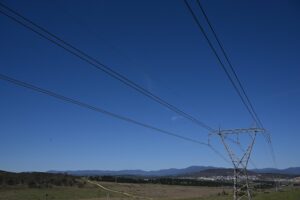Germany is looking to achieve exactly what Australia says is not possible – and wean one of the world’s largest manufacturing economies off coal – as well as shutting down nuclear.
The conservative government of Chancellor Angela Merkel last week issued a discussion paper proposing to implement the strictest controls on coal fired generation yet to be seen in Europe, and to redesign its energy system around renewables, which will account for around two thirds of supply within two decades.
The discussion paper has been prompted by the need to deal with massive over-capacity in its energy system, and as Germany commits to phasing out the remainder of its nuclear generators by 2022 and sourcing nearly half of its electricity supply from renewables – hydro, biomass, wind and solar – within a decade.
The government discussion paper said too many fossil-fired power plants are in the system and overcapacities “have to be cut” to help meet climate targets.
The response is in stark contrast to the situation in Australia, where the conservative government of Tony Abbott is using the argument of “overcapacity” to shut down the pipeline of new renewable energy projetcs, rather than forcing coal to exit the market.
Abbott has insisted that coal is not just “good for humanity”, but will remain the dominant energy source in major economies for decades. It is counting on “clean coal” technologies to reduce emissions.
In Germany, they are taking a different view. The major utilities such as RWE and E.ON have committed to no new coal plants and are focusing on distributed renewable generation and storage. Sweden’s Vattenfall, one of the biggest players in the German market, and the second biggest in Europe, this week said it was looking to dump its brown coal generators and focus on renewable energy instead.
Germany is considered to be at the forefront of the so-called energy transitions that are likely to take place around the world – although it should be noted that South Australia already supplies 40 per cent of its energy needs through wind and solar. Merkel was also a key player in pushing Europe to adopt an emissions reduction target of at least 40 per cent by 2030.
Denmark is also committed to phasing out coal, and its climate change minister this week suggested it fast-track its exit from coal from 2030 to 2025.
Germany currently gets about 45 per cent of its electricity from coal and 11 per cent from natural gas. Another 15 per cent comes from nuclear reactors that Merkel has pledged to close by 2022, and about 24 per cent comes from renewables such as solar and wind, accoding to Bloomberg. (Although separate analysis, which we report here, suggests the share of renewables may be higher, reaching 31 per cent by 2015).
Bloomberg reports that German Environment Minister Barbara Hendricks told parliament last month that the the government will stop financing new coal plants and “critically review” utility plans to build them.
She said an immediate exit would be “irresponsible,” but said that coal should be restrained “step by step.”
Merkel’s conservative party is in a Coalition with the major left-of-centre party, the SPD, whose traditional base lies in the coal-rich states in the north of the country.
But even this party is prepared to move on. “The German energy market in its current form is not providing enough incentives to reduce carbon emissions so that we can reach our climate targets,” Nina Scheer, a lawmaker for the Social Democrats, told Bloomberg in an interview. “We need a new energy mix with less lignite and hard coal.”
According to Bloomberg, the government has not yet decided how it will limit coal. It could place strict curbs on carbon emissions, as the US is doing, or ban the dirtiest of them from bidding for support under a payment system to support generating capacity.
Or they could mandate a “coal exit” like the one in place for nuclear. Again, this is in contrast to Australia, which has been reluctant to force coal generation out of the system, despite studies showing that more than one third of coal fired generation is surplus to requirements because of falling demand and the impact of more energy efficient appliances and the huge growth in rooftop solar. Fossil fuel generators in Australia now argue that they should be “paid” to close down coal plants, to help with the cost of “remediation”.
The German government is aware that it is not possible to suddenly scrap both coal and nuclear at the same time. “It’s clear, however, that also conventional power plants will have to adopt to the requirements of the Energiewende,” an economics ministry official told Bloomberg.
But there are alternatives that are emerging. Apart from the sheer volume of renewable capacity that will be added to the grid in coming decades, and making it more difficult for conventional generators to operate in the market (they don’t like being switched off), new technologies suggest they may not be needed in the future for their other critical function, providing voltage and frequency control for the network.
Younicos, a Berlin-based battery storage maker, has just deployed the first 10MW storage system that it says can remove one of the last big barriers to 100 per cent renewable energy, or at least remove the need for vast amounts of “baseload” fossil fuels.
It says its 10MW-sized battery parks can stabilise the grid faster, cheaper and with greater precision than conventional generation. And, for a total cost of just €3 billion, could make conventional generation in Germany’s 80GW grid largely redundant– at least for frequency and stability purposes








